In defense of the Dutch oven, my favorite cooking tool
An appeal to simplicity in the time of gadgets.
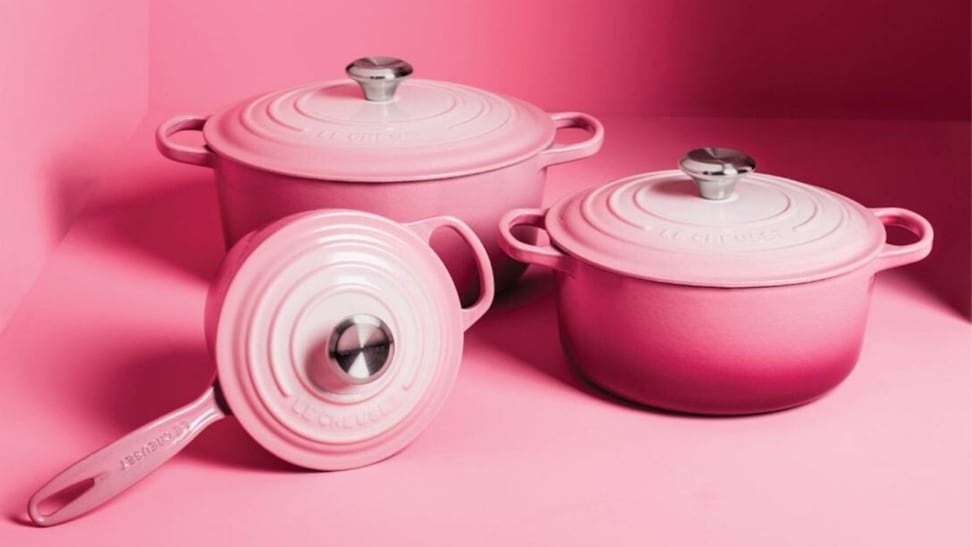 Credit:
Le Creuset
Credit:
Le Creuset
Products are chosen independently by our editors. Purchases made through our links may earn us a commission.
2019 was the year of the air fryer. Or maybe it was the year of the toaster oven, or the fifth consecutive year of the Instant Pot. Regardless of which precise tool you think reigned supreme, one thing is clear—these do-it-all kitchen gadgets are as popular as ever, each one promising you the way to a happier, healthier, and all-around better life.
I understand the appeal of these super-fast, multipurpose gadgets. I’ve extensively tested many of them in our kitchen at Reviewed, learning that air fryers are just convection ovens and that countertop convection ovens are kind of great. And while I wouldn’t dissuade anyone from investing in something that will bring them joy, I can’t help but wonder—have we forgotten the versatility and simplicity of an old-fashioned Dutch oven?
Sure, the Dutch oven probably doesn’t need defending. Le Creuset sales are booming, Great Jones is super popular with millennials, and serious cooks are well aware of the benefits of enameled cast-iron. But if you’re someone who relies on quick gadgets to get your meals on the table, you might not know just how many things you can make—and how much you can learn about cooking—by playing around with this age-old, low-tech tool.
What exactly is a Dutch oven?
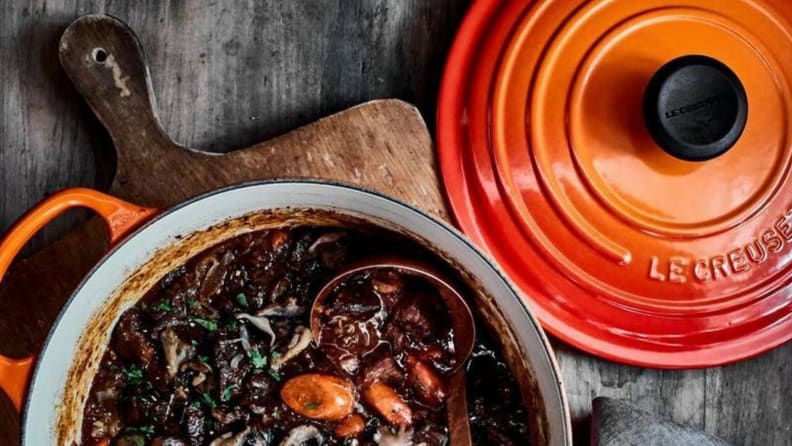
You can use your Dutch oven to make curries and stews, braise meat, and bake bread.
For the unacquainted, a Dutch oven (called a "casserole dish" everywhere but here) is a hefty cast iron pot coated with enamel that can be used on the stovetop, in the oven, and even on your dining room table when it comes time to serve. They're like if your favorite cast iron pan, baking dish, and stock pot joined forces to make your life easier.
Dutch ovens can sauté vegetables, cook soups and stews, braise meat, and bake bread all in one, without sacrificing style or longevity. A versatile, beautiful essential in every home kitchen, they make great gifts for weddings and new homeowners, but you don’t have to be celebrating some kind of milestone to buy yourself one.
What’s so great about them?
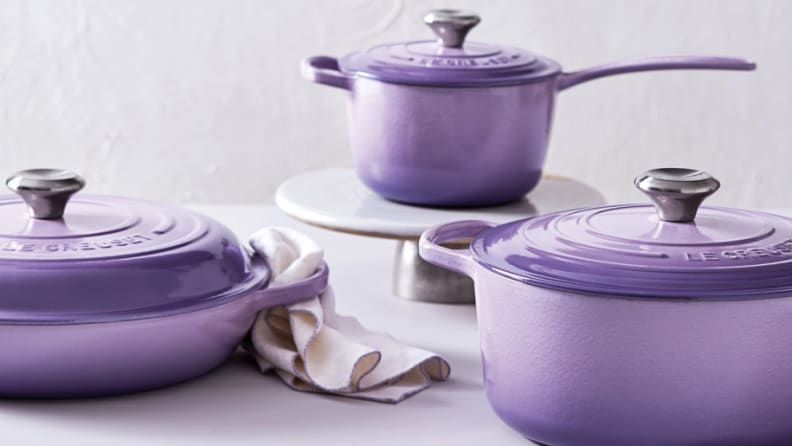
Dutch ovens have the added benefit of being gorgeous to look at.
If you’re still not convinced a Dutch oven is for you, let me give you a rundown of everything that makes them so appealing.
1. They’re incredibly versatile. In the past month alone, I’ve used my own sturdy, simple Dutch oven from Kenmore to mull wine, candy oranges, simmer curries, toss pasta, bake shakshuka, make coq a vin, and more. You can also use a Dutch oven to bake bread and cakes and serve delicious brunch foods right on the table. My housemate was recently gifted an orange Le Creuset, so we no longer fight over using mine!
2. They last forever. Unless you plan on chucking your Dutch oven out the window every night, there’s a good chance it will last you many, many years, if not a whole lifetime. Cast iron is incredibly durable and not susceptible to warping like other metals, and enamelware makes cast iron even stronger by preventing rusting. While enamel can chip, many brands like Le Creuset will fix or outright replace your Dutch oven if damaged. This goes without saying, but it’s also not electrical, so it won’t die like your air fryer and toaster oven eventually will.
3. They’re gorgeous. While not everyone cares about aesthetics as much as I do, you can’t help but smile when you serve something in a beautiful Dutch oven. Most companies offer their ovens in a variety of interesting colors, and you can easily use yours as a serving dish even if you’re not cooking in it—but you really should be cooking in it.
4. They're easy to use. If you're not a big cook, any new tool will require a learning curve to master. Luckily, Dutch ovens are as straightforward as can be, letting you easily move your food from the stovetop to the oven and back. This means that multi-step recipes don't have to require multiple pots! The insulation of cast iron also makes Dutch ovens slow to heat and slow to cool, which can prevent accidental scorching while also helping you achieve an even sear when you need it.
5. They’re easy-ish to clean. While burning food into a Dutch oven is still a threat that requires a lot of elbow grease to fix, enamelware in general is simple to clean. There’s no fiddly parts, nothing to break, and soaking is totally allowed, unlike with standard cast iron. Invest in a bottle of Bar Keepers Friend, read our Dutch oven cleaning guide, and you’re good to go.
Which Dutch oven should you buy?
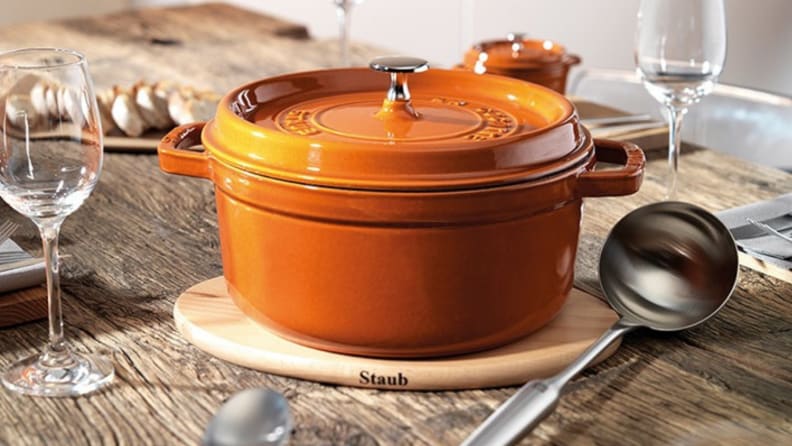
Our favorite Dutch oven is a Staub, which narrowly beat out Le Creuset in our testing.
So you’re going to buy yourself (or someone you love) one of these lovely tools. The only question that remains is—do you buy a Le Creuset or a Staub? These French cookware brands have set the standard with their durable Dutch ovens that are loved by home chefs and professionals alike.
Le Creuset has been making their famed products for over 100 years, and while Staub has only been around since the 1970s, their Dutch oven has challenged Le Creuset for the crown. Both Dutch ovens hover around $300 and are offered in a similar array of stylish colors and seasonal designs. However, they're not created equal.
In our comprehensive testing of Dutch ovens, we found that while both the Staub and Le Creuset could make perfect meals every time, the shape and structure of the Staub made it much more kitchen-friendly—its perfect roundness and unobtrusive handles take up minimal space in the cabinet and on the stovetop.
On the other hand, the Le Creuset, in all it’s look-at-me grandeur, tended to get in the way of multi-pot cooking with its wider pot shape and protruding handles. As one of our kitchen writers Bethany Kwoka wrote of the Le Creuset, “It’s gorgeous and does good work—but always needs to be the star of the show.”
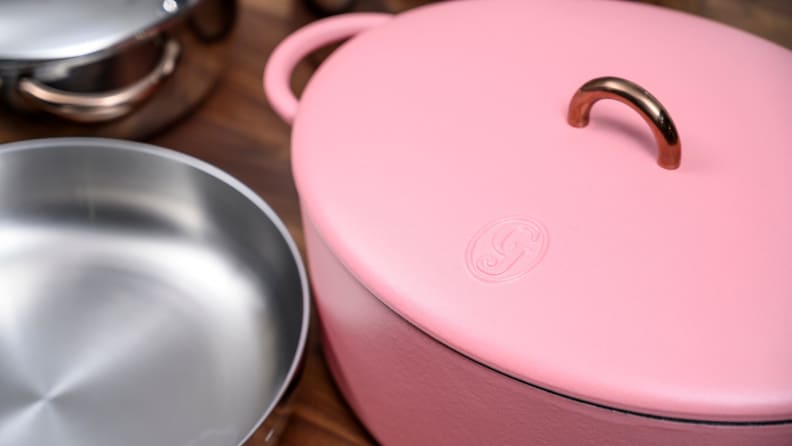
The Great Jones Dutchess is very popular, but its oval shape can result in uneven heating.
For that reason, we recommend the Staub Round Cocotte ($324.95) over the popular Le Creuset. If you’re not swayed by French design and want something more unique and affordable, we recommend checking out the Great Jones Dutchess ($145), an oval-shaped Dutch oven that comes in matte colors. While we found its oval shape resulted in uneven heating on a standard cooktop, it may have more success on smooth cooktops with adjustable burners, and it cooks well for the price.
Regardless of which Dutch oven you choose to buy, you're opening yourself up to a world of culinary possibilities. Now get cooking!
